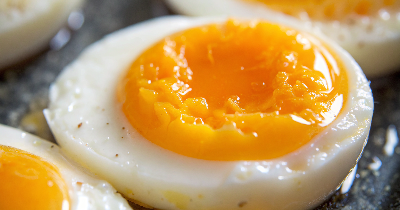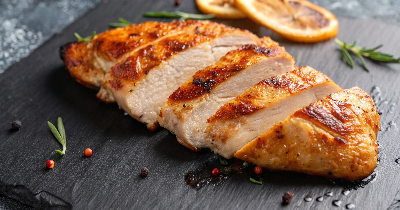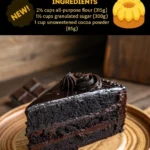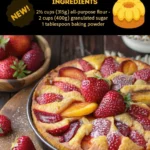you’ve just pulled what you thought would be the perfect chicken breast out of the oven. You seasoned it just right, timed everything perfectly, and then… there it is. A weird, goopy white substance oozing out like your dinner is having some kind of culinary meltdown.
If you’re anything like me, your first thought was probably “Did I just ruin dinner?” followed quickly by “Is this even safe to eat?” Trust me, I’ve been there. That moment of panic when your golden-brown masterpiece looks more like a science experiment gone wrong.
But here’s the thing – you didn’t mess up. This happens to literally everyone who cooks chicken, from nervous beginners to seasoned chefs who’ve been doing this for decades.
Contents
So What Exactly Is This White Goo?
Despite looking like something that definitely shouldn’t be on your plate, that white stuff is actually completely harmless. It’s basically just protein and water having a little chemical reaction party when they meet high heat.

Think about it like this: you know how egg whites turn from clear and runny to solid white when you cook them? The same basic thing is happening with your chicken. The proteins in the meat (especially in lean cuts like chicken breast) start changing their structure when they get hot – scientists call this “denaturing,” but I just call it “cooking chemistry.”
As the proteins transform, they squeeze out water from the meat. Then these proteins clump together with that expelled water, creating the white, slightly sticky substance you’re seeing. It’s like the chicken is literally sweating out its protein.
When Does This Happen Most?
You’re most likely to see this white goo when you’re dealing with:
Boneless, skinless chicken breasts – These lean cuts are protein powerhouses with very little fat to cushion the cooking process. Without that fat acting as a buffer, the proteins react more dramatically to heat.
High-heat cooking methods – Roasting at 425°F, pan-searing on high heat, or any other aggressive cooking technique basically shocks the proteins into squeezing out moisture faster than they can handle it gracefully.
Frozen chicken that’s not fully thawed – This one’s a double whammy. When chicken freezes, ice crystals form inside the muscle fibers and actually damage their structure. So when you thaw and cook that chicken, those already-weakened fibers release even more moisture and protein than they normally would.
Is It Safe to Eat?
Absolutely, yes. I know it looks questionable, but this white substance is just cooked protein and water. It doesn’t taste like much of anything, and it won’t hurt you. Think of it as your chicken’s way of showing you it’s thoroughly cooked.
However – and this is important – if your raw chicken smelled funky, felt slimy, or looked discolored before you cooked it, that’s a different story entirely. The white goo itself isn’t a problem, but spoiled chicken definitely is.
How to Minimize the Goop
If the appearance really bothers you (and honestly, I get it), there are several tricks that can help:
Turn down the heat – Instead of blasting your chicken at 400°F or higher, try cooking it at 350°F. It takes a bit longer, but the proteins won’t panic and squeeze out as much moisture.
Give it a salt bath – Brining your chicken in salt water for 30 minutes to an hour before cooking helps the meat hold onto its moisture better. It’s like giving your chicken a spa treatment that makes it more resilient to heat stress.
Sear first, then bake – A quick sear in a hot pan before moving to the oven can help lock in those juices and minimize protein leakage.
Let it warm up – Don’t cook chicken straight from the fridge. Let it sit on the counter for 15-20 minutes first. Cold-shocked chicken tends to release more of that white stuff.
Upgrade your chicken – If you can swing it, try organic or air-chilled chicken instead of the mass-produced stuff. Factory-farmed chicken often contains more added water, which means more potential for white goo.
The Bottom Line
That white stuff oozing from your chicken isn’t a sign that you messed up – it’s just basic food science in action. Your chicken is still delicious, still safe to eat, and still worthy of being called dinner. You can minimize it with a few simple techniques, but some protein leakage is just part of the chicken-cooking experience.
So next time you see that familiar white goo, take a deep breath and remember: you’re not alone in this. Somewhere, another home cook is having the exact same moment of panic over their perfectly good chicken dinner.




